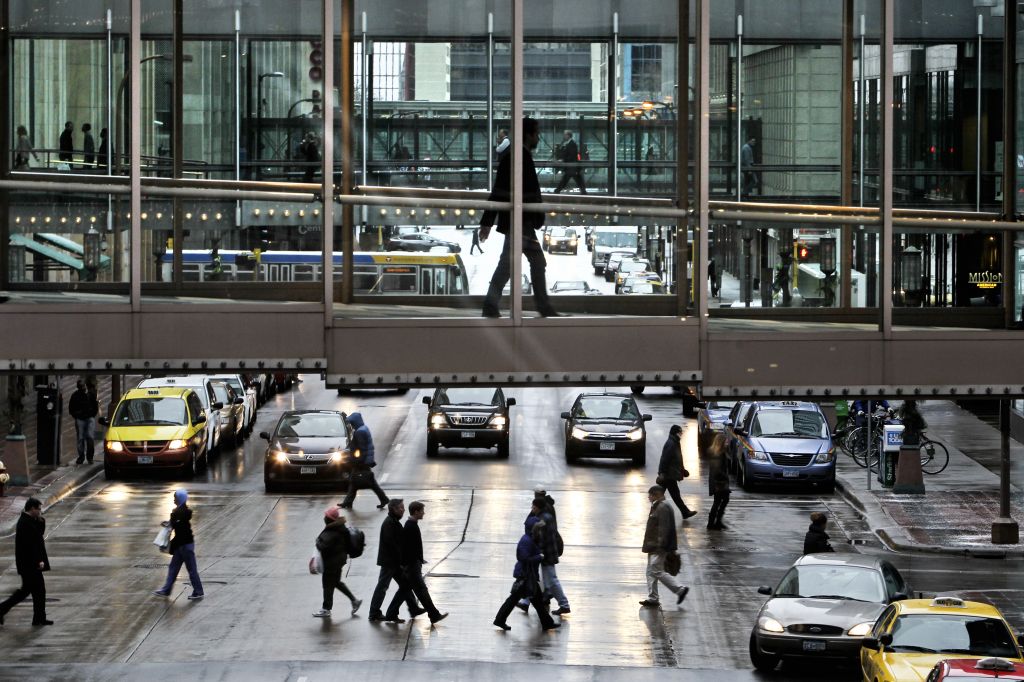Transportation & Mobility / Throwback Blog Post Material
Feb 25, 2015
Winter Walkability is Possible, Despite Cold Conditions
Minneapolis, Minnesota probably doesn't seem like the ideal city to walk around outside. Sure, it's beautiful during the summer, but anyone who's see the movie/TV show Fargo knows that winter brings negative temperatures, mounds of snow, and a desire to stay warm inside. Yet, this city remains an anomaly.
Arlington, TX is in an exciting phase of growth, and it would be wise to take a page from their book. Consistently rated as one of the most walkable cities, Minneapolis has reinvented the morning commute. The ideas seem almost futuristic: walkways that don't touch the ground, parks in the middle of sidewalks, and sidewalks that never end. Each of these initiatives has only recently been brought to life by structured initiatives, and each is making everyday life better for commuters and citizens of Minneapolis.
Walkability
[caption id="attachment_5911" align="img-wrapright" width="399" class=" "] This graph shows the increase in bicycle and pedestrian traffic over the last 7 years.[/caption]
This graph shows the increase in bicycle and pedestrian traffic over the last 7 years.[/caption]
Number 9 out of 50. That's where Minneapolis ranked in 2011 in walkability compared to the 50 largest cities in America. The best part is, they've only pushed harder. In 2009 the city passed a 10 year plan to reinvigorate areas that struggled to meet the standard and infuse new ideas into their sidewalks. From touching up Skyways to widening sidewalks, to creating more bike lanes, Minneapolis serves as a clear example of what a walkable city can look like. The city has faced tremendous growth with recent graduates choosing more walkable locations, and the city makes an effort to study closely these changing demographics. In the past 7 years, Minneapolis saw a 73% increase in bicyclists and 25% increase in pedestrian traffic.
Skyways
Minneapolis' oldest Skyway turned 50 two years ago, so this idea isn't exactly new. In fact, most large cities
[caption id="attachment_5912" align="img-wrapleft" width="215"] One of many Minneapolis Skyways[/caption]
One of many Minneapolis Skyways[/caption]
have bridges connecting building-to-building, allowing the workers to pass quickly through and never have to walk outside. Low temperatures and road conditions made it difficult for workers to get to work, so in the 1960's, the city began building an interconnecting pathway of bridges. Each connected to the second or third floor of the buildings were owned by the building owners themselves. By 1972, 8 bridges were already in place. Today, that number has grown exponentially and the Skyway system serves over 11 miles of downtown. People can use the Skyways to get from the Entertainment District, to the Shopping District, to work, and upon completion of the new Minneapolis stadium, it'll connect there, too.
Sidewalks
No one gets to be a nationally ranked walking city without some good sidewalks, but Minneapolis city government takes that mission to heart. Within their Public Works Department is a smaller division called the  Sidewalk Inspections Office. Their sole purpose is handling complaints, suggestions, and comments relating to walkability. Laws in Minneapolis dictate mandatory snow shoveling, and the Sidewalk Inspections Office handles that, too. Good walking environment often includes bicycling convenience, and Minneapolis is ranked 27th nationally for its number of bike commuters. Many of the sidewalk improvement initiatives from the city serve to better bike lanes and infrastructural compatibility with bikers.
Sidewalk Inspections Office. Their sole purpose is handling complaints, suggestions, and comments relating to walkability. Laws in Minneapolis dictate mandatory snow shoveling, and the Sidewalk Inspections Office handles that, too. Good walking environment often includes bicycling convenience, and Minneapolis is ranked 27th nationally for its number of bike commuters. Many of the sidewalk improvement initiatives from the city serve to better bike lanes and infrastructural compatibility with bikers.
All this advancement seems unrealistic for a city like Arlington, until you learn these cities have roughly the same population. Clocking in around 400,000 estimated, our city has the population to support initiatives like this. We may not need Skyways (although in August it might not be such a bad idea), but more sidewalks and bike lanes are a necessity to attract young and talented workers who can help Arlington blossom.
